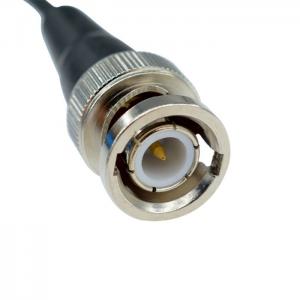1. Gently remove the protective bottle from the top of the electrode and put it away for use.
2. Use deionized water to clean the white deposited salt on the outside of the electrode.
3. In order to maintain a proper penetration rate, the liquid level in the tube must submerge the end of the spiral glass tube and exceed the sample liquid level by at least 1 inch (2.5cm). When using, put the electrode bulb end in the measured liquid completely. Let the bulb come into full contact with the liquid to be tested to produce an ionic reaction effect.
4. Gently shake the electrode (just like shaking a clinical thermometer) to remove air bubbles in the electrode.
5. Soak the electrode in the pH electrode storage solution for 1 hour. If there is no electrode storage solution, add 1g KCl to 200mL pH7 buffer as a temporary electrode storage solution. When the electrode is not in use, it can be equipped with a long-term preservation solution to activate and protect the bulb end. The preparation method can add 10mL 3.3kcl solution to 200mL pH4 buffer. [3.3KCL is saturated potassium chloride, the configuration method weighs 23 grams of potassium chloride and 100ml deionized water] appropriate amount of preservative
# Gib Digital PH Sensor Electrode Pay attention when using electrodes
1. Use fresh buffer
2. Open the electrode protective cover
3. Measure the gap and rinse the electrode with deionized water
4. Stir the buffer and the sample: a) Stir at the same speed all the time; b) Stir first, then measure
5. When preparing the pH electrode, rinse the electrode with distilled water before and after the measurement. Use a lint-free cloth to absorb the excess water on the electrode tip to avoid rubbing the electrode bulb, otherwise it will generate static electricity and interfere with accurate pH measurement.
6. Make sure the buffer temperature is the same as the sample temperature. If the sample temperature is different, use a temperature compensation probe for temperature compensation.
7. Periodically check the electrode slope with a two-point calibration method. When the electrode reading drifts or the slope is lower than 92%, please refer to the cleaning of the electrode to clean the electrode.
three,.
# Gib Digital PH Sensor Electrode Maintenance:
1. Cleaning the electrode
General cleaning solution-soak the electrode in 0.1M HCl or 0.1M HNO3 solution for 15 minutes, and then soak the electrode in the electrode storage solution for 30 minutes.
2. The liquid junction is blocked (salt precipitation)
Causes: hard water, mud, organic dirt, plankton microorganisms, moss, etc. Attached to the water-permeable sand core around the bulb and PTFE, causing the external reference electrode to not work properly.
3. Solution: Soak the electrode in hot water (60℃) for 15-20 minutes; soak the electrode in a hot saturated KCl (60℃) solution for 20-30 minutes and cool to room temperature; soak the electrode in pH 4 buffer for 20 to 30 minutes.
Check if there is too much crystals, if so, rinse the crystals repeatedly with deionized water to check if the flow rate is normal If not, soak the electrode in hot water (60℃) for 15-20 minutes; soak the electrode in a hot saturated KCl (60℃) solution for 20-30 minutes, and cool to room temperature; soak the electrode in pH 4 buffer 30 minutes. Soak the electrode tip in concentrated HCl for 5-10 minutes, rinse the electrode and check if the electrolyte flow rate is normal. If the junction is still blocked, pull the junction (don’t touch the glass bulb)
4. The precipitation of inorganic substances on the pH sensitive membrane
Cause: Inorganic sample measurement Solution: clean with EDTA, ammonia or acid
5. Dehydration of pH sensitive membrane
Causes: improper storage, long-term use, high temperature operation or strong alkaline solution, resulting in slow and unstable response
Solution: activated electrode Soak the electrode in 0.1 M HCl for 1 minute, rinse with tap water for 30 seconds, soak the electrode in 0.1 M KOH for 1 minute, rinse with tap water for 30 seconds, calibrate the test electrode with buffer solution, if it still does not work, repeat the above steps, at most 3 times
6. The PH electrode is used for a long time, and the electrode is not properly cleaned and maintained in the tested environment, which leads to unstable electrode data and other factors. Solution: After the electrode is used for 2-3 months, perform a bulb cleaning work on the electrode and an inspection work on the liquid junction. Solution: Take the electrode out of the environment to see if there is any dirt on the surface of the bulb. If there is any dirt, wipe it with ethanol cotton, and then clean it with deionized water.
[Note that the bulb is fragile, pay attention to during the wiping process].
Then check the liquid junction to see if there are any contaminants attached to the surface. If so, you can use deionization to rinse, or shake the electrode back and forth in the measuring cup. If the water is not clean, change the water until the dirt disappears. . Then wash the electrode and place it in the activation solution for 8 hours, then measure it in the standard solution to restore the measurement state. |
